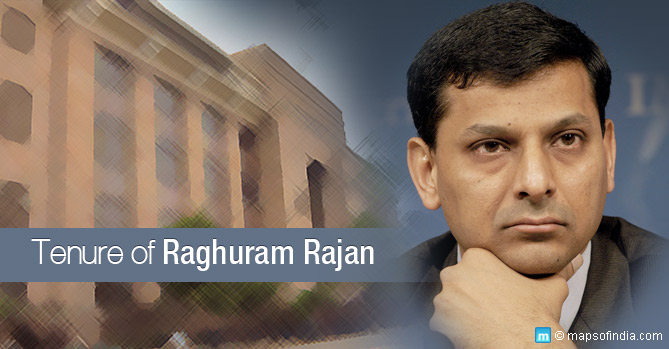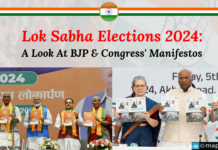 When Dr. Raghuram Rajan took over as the 23rd Governor of the Reserve Bank of India from D. Subbarao on 4 September 2013, he had major challenges at hand.
When Dr. Raghuram Rajan took over as the 23rd Governor of the Reserve Bank of India from D. Subbarao on 4 September 2013, he had major challenges at hand.
The economy was at its lowest point in over a decade, the rupee had weakened to record levels – depreciating 11% that year, FIIs were pulling out money, FDI was becoming scarce, and worst of all, investor confidence in the UPA II government was at its lowest.
Raghuram Rajan’s Credentials
Dr. Rajan was pulled out of his professorial assignment at the Booth School of Business, University of Chicago, and with good reason. His academic and professional credentials were impeccable. An alumni of IIT-Delhi and IIM-Ahmedabad, he went on to complete his Doctorate from Sloane School of Business at Massachusetts Institute of Technology.
Post his Doctoral research, in 1991, he joined the Booth School of Management in Chicago as a Professor of Finance. From 2003-2007, he worked with the International Monetary Fund (IMF) as a Chief Economist.
In 2012, he was appointed by the UPA II government as a Chief Economic Advisor, and in 2013, he took over as the Governor of Reserve Bank of India. His term comes to an end this September.
The man who predicted the 2008 meltdown
It was way back in 2005, when as Chief Economist at the IMF, he predicted that the global economy was at risk of a collapse, on account of excess flow of capital through financial instruments like mortgage securities and credit default swaps, which was leading to an artificially boosted economy.
When global economy seemed to be on steroids, few took him seriously, until in 2008, when the global meltdown began and was triggered by the very factors that Rajan had rightly predicted. Ever since, he has earned worldwide respect as an economist with deep understanding of the global monetary system.
Speculation surrounds Dr. Rajan’s chances for a 2nd term
Ever since he took over as RBI Governor, Raghuram Rajan has been in the news. His every statement, opinion or meeting is closely scrutinised by the media and he continues to enjoy wide support from the industry, media and people, majority of whom see him as most suited to take India on a positive growth trajectory, going forward.
RBI-Centre Conflict
But it’s not been smooth sailing all the way. He has had to push hard to maintain RBI’s autonomy and functioning, independent of the government, and act as per prevailing market situation.
His priority as RBI Governor is to maintain control and stability of the rupee with a strong eye on inflation, while that of the government is to push for economic growth and accelerate job creation. This often leads to contradictory positions being taken by the RBI and the Finance Ministry, leading to tensions between the two.
Former Governor D. Subbarao had to bear the brunt of the then Finance Minister P. Chidambaram’s displeasure, which resulted in frosty relations between the two.
Divergence over Interest Rates
Raghuram Rajan, too, has been facing a not-too-pleased Finance Minister in Arun Jaitley, who has been under pressure to reduce interest rates, while Rajan has been cautious in dropping interest rates, reducing it only in limited and progressive steps, fearing inflation will once again raise its ugly head.
The problem is that the BJP-led NDA government took office at a difficult time when the domestic economy was in bad shape. It promised to spur growth and rapidly create more jobs. To achieve this, the government required an easing of interest rates, which Governor Rajan has been reluctant to do, at least not till inflation came under control and economic fundamentals improved.
Several politicians within the BJP and allied parties have been pushing the Finance Minister to reduce interest rates and ease liquidity to business and industry, in the hope that these will spur growth and create jobs.
This has been a dilemma since the global economy has not been showing signs of an early recovery, with crude oil rates remaining at record low levels, thus, increasing pressure on oil exporting economies which are still struggling to revive their respective economies.
Tight Control on Interest Rates
In India, the fundamentals continue to remain weak which has led to Raghuram Rajan maintaining a tight control over interest rates and controlling the supply of money into the economy.
There has been a backlash. MSMEs, who are most affected due to low demand and lack of financial liquidity, have been putting pressure on the Finance Ministry to get Rajan to relent.
On the political side, Dr. Subramanium Swamy, has led the fight against Dr. Rajan being offered a 2nd term, even going to the extent of calling for his immediate termination.
So is the criticism against Rajan justified?
Let’s look at the challenges that Raghuram Rajan faced when he took office and the subsequent policies followed, along with the consequent impact on economy.
Challenges
- Arresting the rupee decline and giving it stability: In 2013 alone, the rupee had depreciated by 11 % till the time Rajan took office, which was a strong indicator on the prevailing condition of the economy.
- Economic growth slipping to below 6%: At the time of taking office, the economy had slowed down with predictions of growth for FY13-14 expected to remain below 6%, a rate not seen for over a decade.
- Low international investor confidence: In 2013, FIIs were pulling out money from the Indian markets and FDI was down to a trickle. Exports had slowed down considerably and forex reserves were shrinking, while core sector growth was virtually at a standstill.
The ‘Rajan’ Turnaround
Despite intense political pressure to bring down interest rates, Raghuram Rajan has been able to fend off calls to lower rates and still bring the economy back to a fast growth trajectory. This is despite the fact that economic fundamentals continue to remain weak and the economy still vulnerable to external and internal triggers.
The best proof of the success of Dr. Rajan’s policies, especially during the NDA regime, is the fact that GDP in the last quarter has grown by 7.9%, as per latest figures released.
While it is true that he has been ably supported by a hyper-active PM and his cabinet, who have collectively focused on reviving the economy and bringing growth back to higher levels, as witnessed in earlier years.
Far-Reaching Reforms
Extension or not, his term will be remembered for the far-reaching reforms that he was able to push, especially in the banking sector, where NPAs have been a perennial problem and was often masked under layers of cover-ups that PSU banks indulged in.
Same is true for crucial appointments in the banking sector. It was Rajan’s push for greater autonomy and transparency in selecting heads of PSU banks that is now beginning to show results.
Dr. Rajan has been his own man and has stood up to political pressure. The latest growth figures take the sting out of his critics and has made his case for a second term, even stronger.
Will PM Modi go along with the large international and domestic constituency of supporters calling for Dr. Rajan’s second term in office or will he bow down to political pressure and not extend his term, is something that remains to be seen. However, the verdict is out – India needs Rajan, no question.
Either ways, the markets seem to be spooked by the speculation. Earlier the government comes out with a decision, the better it will be for all stakeholders.




